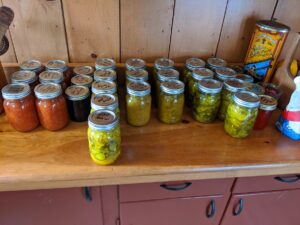Living on a shoestring is all about making every penny count. It can be tough, but with some good old-fashioned skimping you can make it work. As a country boy, I know a thing or two about living simply, and I’m happy to share some tips on how my lovely wife and I got by when times were tough.
- Cook from scratch
Eating out can be expensive, and buying pre-packaged meals can add up quickly. Instead, learn to cook from scratch. Buy basic ingredients like rice, beans, and pasta, and learn to make meals from them Not only is it cheaper, but it’s also healthier and often tastes better than pre-packaged food.
- Shop at thrift stores
Buying brand-new clothes can be expensive, but shopping at thrift stores can save you a bundle. You can find gently used clothes for a fraction of the cost of new ones. Plus, you might even stumble upon some hidden gems.
- Learn to mend and repair
Instead of throwing away clothes or household items that are broken, learn to mend and repair them. Sewing on a button or patching a hole can save you from having to buy new items. It’s also a useful skill to have for the future.
- Use coupons and discounts
Don’t be too proud to use coupons and discounts. They can save you a lot of money, especially on groceries and household items. Keep an eye out for deals and sales, and always compare prices before making a purchase.
- Cut back on unnecessary expenses
Take a look at your monthly expenses and see where you can cut back. Cancel subscriptions that you don’t use, switch to a cheaper phone plan, and reduce your energy usage. Small changes can add up to big savings over time.
- Grow your own food
If you have the space, consider growing your own fruits and vegetables. You don’t need a big garden to get started – even a few potted plants can provide you with fresh produce. Not only is it cheaper, but it’s also a fun and rewarding hobby.
- Make your own cleaning products
Instead of buying expensive cleaning products, make your own using simple ingredients like vinegar, baking soda, and lemon juice. Not only is it cheaper, but it’s also more environmentally friendly.
- Learn to enjoy simple pleasures
Living on a shoestring doesn’t mean you have to give up on fun and enjoyment. Learn to appreciate simple pleasures like reading a book, taking a walk in nature, or having a picnic. These activities are often free or low-cost, but can provide just as much joy as more expensive pursuits.
In conclusion, living on a shoestring is all about being resourceful, frugal, and creative. It can be tough, but with some effort and scrimping, and determination, you can make it work. By cooking from scratch, shopping at thrift stores, learning to mend and repair, fixing your own equipment, using coupons and discounts, cutting back on unnecessary expenses, growing your own food, making your own cleaning products, and learning to enjoy simple pleasures, you can stretch your dollars further and make the most of what you have.
Have a great day. GW


